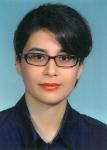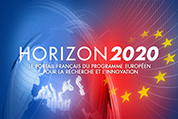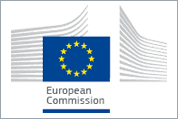ESR1.1: Aida Hejazi NooghabiGreen’s function retrieval from noise correlation in multiple scattering media

My name is Aida Hejazi Nooghabi. I was born in 1986 in Mashhad, Iran. I did my bachelor in physics at Ferdowsi University of Mashhad from 2004 to 2009. Afterwards, I continued my studies in Geophysics and more specifically in seismology at Institute for Advanced Studies in Basic Sciences (IASBS), Zanjan, Iran. As a master student, I was working on one of the applications of ambient seismic noise for studying the structure of the Earth. The title of my thesis was: “Extraction of Rayleigh wave dispersion curves in NW Iran using ambient seismic noise”. Two years later in 2014, I went to International Center for Theoretical Physics (ICTP), Trieste, Italy. There I was a postgraduate diploma student in Earth System Physics (ESP). Fortunately, for dissertation in ICTP, I had again the chance to work on one of the other applications of ambient seismic noise. The title of my thesis was: “Monitoring the variation of crustal properties with cross correlation of ambient noise”. This program was finished recently in August 2015. For PhD, I have been accepted to UPMC, Paris, France and soon I will be starting my project on Green’s function retrieval from noise correlation in multiple scattering media.
Main host institution:
Institut des Sciences de la Terre de Paris (ISTeP), Université Pierre et Marie Curie (Paris, France)
Supervisor:
Lapo Boschi, (lapo.boschi @ upmc.fr) Julien de Rosny (julien.derosny @ espci.fr), Philippe Roux (philippe.roux @ ujf-grenoble.fr), James Rickett (JRickett @ slb.com)
Secondment institution:
- Institut des Sciences de la Terre (ISTerre), CNRS (Grenoble, France)
- Institut Langevin, ESCPI (Paris, France)
Objectives:
Ambient-noise seismology and seismic/acoustic interferometry are based on an important property of cross-correlation. Namely, that cross-correlation of ambient signal recorded at two receivers is related to (and can be used to measure) the Green's function associated with the receiver locations, provided that the ambient wave field is sufficiently diffuse. Whether the field is diffuse depends on the geographic distribution of noise sources, and/or sharp obstacles that, by scattering or reflecting incoming waves, act as secondary sources. Unlike sources, obstacles increase the complexity of the medium, and therefore that of the Green's function, so that, in principle, they both facilitate and complicate its reconstruction. The ESR will investigate this paradox by a strong back and forth interaction between theory and analogue/numerical modelling.
Expected results:
Building on recent work by the co-supervisor De Rosny and co-workers the ESR will implement both numerical simulations and controlled acoustic experiments; The ESR’s goal will be to identify the fundamental relationship that link key parameters of scattering and Green's function reconstruction by cross-correlation, such as bandwidth, mean free path, number of sources, diffusion constant, etc.
INTERNATIONAL CONFERENCE:
- ASA - Acoustical Society of America, Boston MA, 25-29/06/2017: poster on Interferometric reconstruction of plate waves from cross correlation of diffuse field on a thin aluminum plate
see all WAVES Posters & FlyersAlso in the section
Key Facts
- Coordinated by Université Pierre et Marie Curie
- 15 participating partners
- 6 European countries and the USA
- 15 trained fellows
- Project budget: 3 227 952.96€
- Project duration: 4 years
- WAVES is a European project funded by the European Union’s Horizon 2020 research and innovation programme under the Marie Slodowska-Curie grant agreement n° 641943.
Contact
Coordinator:
Lapo Boschi (lapo.boschi @ upmc.fr)
Project Manager
Fanny Schultz (fanny.schultz @ sorbonne-universite.fr)



